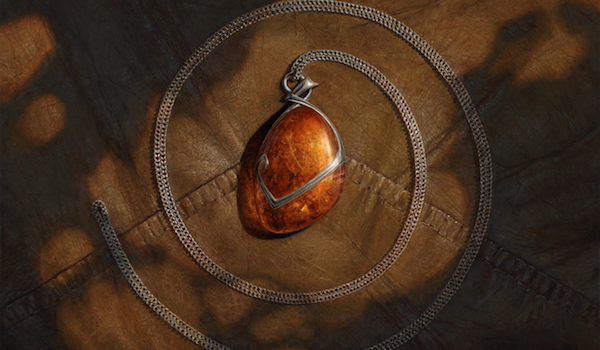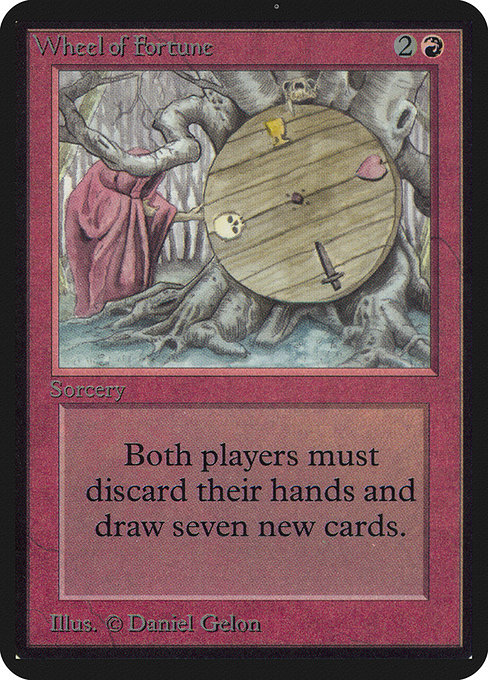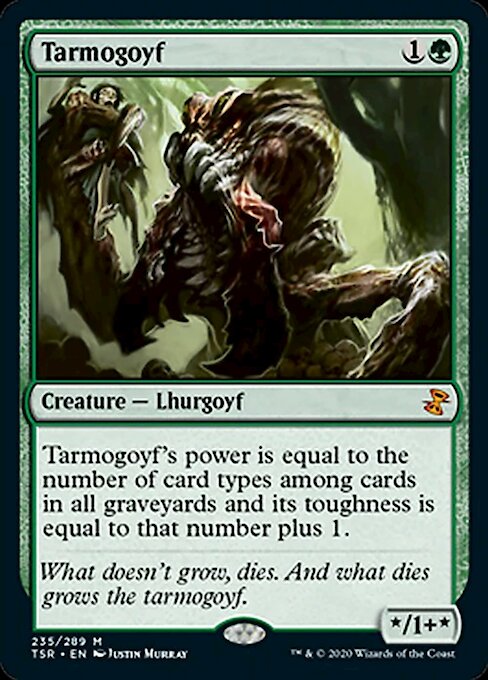Are you a Quiet Speculation member?
If not, now is a perfect time to join up! Our powerful tools, breaking-news analysis, and exclusive Discord channel will make sure you stay up to date and ahead of the curve.
Grinding Modern post-MH2 made me realize something. The format is crawling with engines, single cards that generate value on a turn-by-turn basis. These range from planeswalkers like Wrenn and Six to creatures like Ragavan, Nimble Pilferer and other permanents such as Urza's Saga. Leave these cards unchecked and they will snowball value, be it in the form of damage, cards, mana advantages, bodies or otherwise, until opponents simply cannot keep up.
The deck I'll unveil today is one I've been working on for months: a five-color pile that only plays 14 color-producing lands. Read on for the theory that informed my deckbuilding process, the deck itself and a bit of its history, and a mini-primer for Amber Domain.
The Engine War...
Engines snowball value. How does that scenario play out in practice? The simplest case is when one player has an active engine and the other doesn't. Think being stuck on one color as opponents beat you down with their Ragavan, amassing treasures and maybe even casting a spell off the top of your deck. Enough turns of this and the game is functionally over, meaning no card you could rip off the top could offset the advantage accrued across the table.
Then there's the trade-off scenario, where players stay afloat by removing opposing engines before they get out of hand. It's easy enough to absorb one or two hits from a Ragavan, even if it can feel miserable. Peel that Fatal Push and despite being at a disadvantage, you're still in the game. Much of my interactive Modern gameplay of late has revolved around engines, with players deploying one, only to have it removed, and then removing their opponent's engine, and then plopping down another. This common gameplay leads to a "last man standing" effect where whoever has the engine on board at the end of such exchanges wins the ensuing "topdeck war..." without having to topdeck anything.
The final case occurs when both players have active engines, and neither removal for their opponent's. Sometimes the engines are the same card; both party ticks up their Wrenn and Six during a stalemate, which the player with the smaller Wrenn is forced to break lest their opponent ultimate and reclaims access to their grave full of Lightning Bolts. Other times, they're different; one player ticks up that same Wrenn while their opponent uses Urza's Saga to craft an army of Construct tokens, hoping to go over the top of whatever board's in front of them and take out the planeswalker.
...And How to Win It
These types of "engine duels" force players to critically assess the value offered by each piece, determining which is more valuable than the other at that stage in the game. The player with the least valuable engine may not lose as fast as the one with no engine in the first scenario, but is under pressure in a similar way to deal with the spiralling board state.
The key to winning an engine war? Play more engines. Also, play more answers to your opponent's engines. Fatal Push has experienced a steep drop-off in popularity because it doesn't answer Wrenn and Six. For years the format's worst color, white has now secured a role as the color best equipped to stick spokes in enemy gears.
Planeswalker, recursive creature, indestructible artifact... Binding answers them all, often for a single mana. The downsides? It can be faded by enchantment hate, and it doesn't hit a popular engine in Urza's Saga. That's where March comes in; no other mainboard card is better against the land. And for everything in between, there's Ending.
Engines vs. Bursts
Modern's best engines generate at least one card's worth of value per turn. Some of them need a turn to get going, like Emry, Lurker of the Loch; others hit the ground running, like A-Omnath, Locus of Creation. I've found that as a general rule, engines should provide an immediate burst of value if they cost two mana or more. As another, engines should not demand mana in return for advantage. You won't find Spectral Sailor mentioned in this article! (Oh, crap.)
Things weren't always like this. Perhaps it was the advent of planeswalkers that normalized one-card value engines, though the first batch printed was hardly phenomenal. But engines haven't always existed neatly packed into a single card. There was a time before powercreep where players had to assemble combinations of specific cards to lock in recurring value. Indeed, one of the earliest aggressively-costed single-card engines broke the competitive circuit wide open.
Other such one-card engines could appear innocuous and nonetheless wind up tournament powerhouses.
Of course, value has always been an integral part of winning at Magic. It's just that for much of the game's history, game-winning value was commonly accrued by single spells in bursts.
The above cards provide a one-time burst of value. But precious few of today's burst spells find themselves capable enough to tangle with Modern's best engines. Of the Top 50 over on MTGGoldfish, only Expressive Iteration and sideboard card Veil of Summer qualify. Both cards have been banned from multiple formats, demonstrating the high power level required of burst spells in this climate.
One Deck to Run Them All
So I set out to create a deck applying these strategic principles top-down. Resolve engines; remove engines; win. You know, like Omnath, but trimming all the mana dorks and three-drops for more engines and cards that beat them.
The deck's first draft came about when a buddy played against me with a UW Artifacts build making great use of Emry, Lurker of the Loch. The card could come down as early as turn one and begin snowballing advantage with the likes of Mishra's Bauble, and piqued my interest as another potential one-mana engine. I paired it with Ragavan, as does UR Breach, and Skrelv, Defector Mite, from my friend's UW deck. The high legend density locked me into Mox Amber, which between ramping and buffing Constructs plays great with Urza's Saga. And I couldn't help but splash Wrenn and Six, a bomb alongside Saga and another legend for Amber.
Skrelv quickly wore out its welcome. It was gravy alongside Amber and Emry, but realistically only performed against slower interactive decks with plentiful spot removal. Even there, it was often better to have another engine card than Skrelv to protect it. So I went hunting for replacements. It wasn't long before a promising option emerged:
Sam, too, protects engines, by recurring them. And he can create bursts of value by looping a fetchland or a Bauble during otherwise slow games, or coming down to block and trade with an opponent's attacking creature. Looting via The Ring is also potent in a deck with multiple four-of legends and the land-hoarding Wrenn and Six (a splash I simply couldn't resist).
Eventually, though, I removed Sam from the list. Not being much of an engine himself was the Halfling's downfall. Another two-drop swooped in to claim his place:
Bowmasters is a very interesting card in that it's part engine, part burst. Against cycling decks like Living End or deep-draw strategies utilizing A-The One Ring, it's more akin to Tarmogoyf with flash and sometimes haste (players seem quite comfortable going to 5 life on upkeep and then tapping A-The One Ring in their main phase.) And then versus small creature decks like Yawgmoth and even Rakdos, it's more like a cantripping Forked Bolt. The Orc's value is way less locked-in the way Emry's is, so it tends to play differently depending on the matchup (it definitely gets boarded out in some).
Finally, the engine currently taking over Modern:
Believe the hype, this card is that good. Especially a turn early off Mox Amber. Or on turn two proper thanks to another Amber or just a Treasure token. (I did try Delighted Halfling in this deck, but was unimpressed by the card in any scenario that didn't involve an early Ring.)
Amber Domain, by Jordan Boisvert
A few technical tips about this deck:
- If they kill your engine, play another one. If they play theirs, kill it, then play yours. This tactic maximizes the turns we have an engine in play that they don't.
- Our fetchlands find everything. It's good to start by searching up Crypt (if no second fetch) or Foundry (to supplement with Triome). Pool is a good second land that unlocks our gold two-drops.
- Blood Moon ain't so scary. Jegantha can power through it, Chromatic Star and Springleaf and Amber can ignore it, and Ragavan makes Treasures. I have won more games against a resolved Moon with this deck than I've lost.
- Don't be afraid to go minus if it means a faster Ring. Extra Ambers aren't that useful otherwise, and we recoup the advantage by having engines out earlier.
- If we aren't under pressure, it's best to prioritize establishing our different engines before generating our own pressure, e.g. Wrenn over Bowmasters.
- Feel free to crack Bauble aggressively if there's no Emry in sight to ramp into. Otherwise, it's best to wait to play Emry for a single mana when we have other options that let us spend all our mana.
- Pyroclasm is still the sleeperest sideboard card in Modern.
Breaking of the Fellowship
The above deck would truly present as a spooky future artifact if you showed it to the me of 2016. But Modern has changed, and it's not alone.
Today's is likely to be my last written piece for Quiet Speculation, closing out a writing partnership with Modern Nexus that lasted close to a decade. Thank you so much to all you readers for following along on this journey. The engagement especially has meant a lot. It has been awesome to meet some of you stateside and overseas, and to share our love for this exciting and dynamic format.
If you'd like to stay in touch, find me on the Quiet Speculation discord or over at my totally unrelated Twitch channel. Adios for now!






























